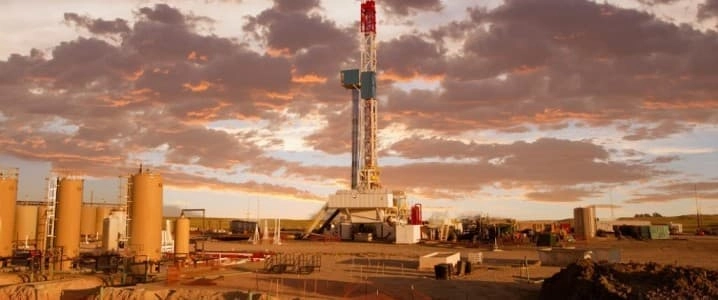- Rystad Energy: M&A dealmaking slumped in H1 2025.
- Rystad Energy: M&A was particularly weak in the first quarter.
- The slowdown in the U.S. M&A can largely be attributed to a dearth of opportunities in the Permian Basin, long considered North Americas M&A hotspot.

Mergers and acquisitions in the global upstream oil and gas sector clocked in at just over $80 billion in the first half of 2025, good for a 34% year-over-year decline amid volatile oil prices and tariff concerns by the Trump administration. According to Rystad Energy, M&A was particularly weak in the first quarter, with deal value totalling just $28 billion compared to $66 billion in the first quarter of 2024. This was largely as a result of lackluster activity in North America, with the regions share of global deal value dropping to 51% in the first half of the year, down from 71% in the first quarter.
The slowdown in the U.S. M&A can largely be attributed to a dearth of opportunities in the Permian Basin, long considered North Americas M&A hotspot. Consequently, E&P companies are increasingly turning elsewhere as the Permian cools and asset values skyrocket: back in May, EOG Resources (NYSE:EOG) acquired Utica heavyweight Encino Energy for $5.6 billion; Diversified Energy (NYSE:DEC) bought Maverick Natural Resources for nearly $1.3 billion while Citadel paid $1.2 billion for Paloma Natural Gas .
Canada has, however, continued on its hot M&A streak, with upstream M&A deal value hitting $11.9 billion in H1 2025--nearly equal to the countrys annual average over the past five years. Leading the charge was Whitecap Resources (OTCPK:WCPRF) acquisition of Veren for $15 billion, including net debt, as well as CNRL s purchase of Shell Plc s(NYSE:SHEL) stake in the Athabasca Oil Sands Project. Further, Strathcona Resources (OTCPK:STHRF) divested all its Montney assets and proposed a takeover of MEG Energy (OTCPK:MEGEF) in a deal that will turn it into a pure-play heavy oil company.
Related: Saudi Arabias Crude Oil Exports Hit 3-Month High in May
Outside North America, International M&A activity increased 37% year-on-year to $39.5 billion with a strong recovery in the second quarter overcoming a weak start to the year after deal values plunged nearly 60% Y/Y. Major transactions included ADNOC subsidiary XRG s bid for Australia's Santos Ltd (OTCPK:STOSF), accounting for nearly half of the total international deal value. A consortium led by ADNOC subsidiary XRG has made a $18.7 billion non-binding indicative offer to acquire Santos. The offer, valued at $5.76 per share, involves a potential scheme of arrangement for all of Santos' issued shares. The consortium includes Abu Dhabi Development Holding Company (ADQ) and Carlyle. Santos has granted XRG a six-week exclusive due diligence period to assess the proposal. Meanwhile, Italys National Oil Company (NOC), Eni S.p.A. (NYSE:E) sold its upstream assets in Africa to giant oil and commodity trader, Vitol , for $1.65 billion; Norways DNO ASA (OTCPK:DTNOF) acquired Sval Energi for $1.6 billion while Spains Repsol (OTCQX:REPYY) and UKs Nego Energy s UK merged their North Sea upstream businesses to form Neo Next Energy.
That said, a rumored-and-denied merger between BP Plc (NYSE:BP) and Shell (NYSE:SHEL) would no doubt seek to steal the M&A limelight, with deal value likely to approach $80 billion. Recent reports have emerged that Shell was considering a takeover of BP, potentially creating a European energy giant. However, Shell has explicitly stated it is not actively considering an offer for BP and has not held any talks with them regarding a possible acquisition. Shell has made a statement under Rule 2.8 of the UK Takeover Code, meaning the company is restricted from making an offer for BP for at least six months, except in specific circumstances.
Interestingly, dealmaking in the natural gas sector has been robust, with deal values surging 30% in the first quarter. As Rystad notes, Big Oil companies are currently optimizing their portfolios to manage risk more effectively, a trend that is driving M&A in the gas sector. To wit, back in March, Chevron Corp. (NYSE:CVX) sold a 70% stake in its East Texas gas assets to TG Natural Resources for $525 million. The deal includes $75 million in cash and a $450 million capital carry to fund Chevron's Haynesville development. This transaction is part of Chevron's plan to divest $10-15 billion of assets by 2028. TGNR will become the majority owner of the East Texas gas assets and Chevron will retain a 30% non-operated interest and an overriding royalty interest. Similarly, Equinor (NYSE:EQNR) acquired a non-operating stake in EQT Corp s (NYSE:EQT) Marcellus assets, helping the Norwegian energy giant to gain exposure to robust gas production with minimal operational risks.
These non-operated joint ventures allow majors and international oil companies to focus on their core operational portfolios while maintaining exposure to US shale gas, which has a positive outlook due to upcoming liquefied natural gas (LNG) projects and rising energy demand from data centers. Retaining non-operated stakes also allows majors to secure feed gas for planned off-grid power plants focused on artificial intelligence (AI), noted Atul Raina, Rystad Energys Vice President, Upstream M&A Research.
By Alex Kimani for Oilprice.com
More Top Reads From Oilprice.com




